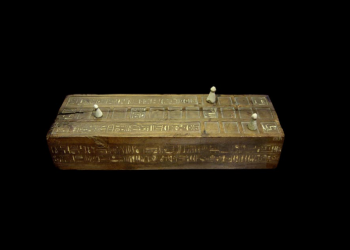According to a new study, scientists have recently discovered that Birch-Bark Tar was used as ancient glue for at least 50,000 years from the Paleolithic until the time of the Gauls. According to a study published in the Journal Antiquity, Birch-bark tar was used continuously in the territory of modern Europe from the Middle Paleolithic to the Iron Age. Made from heated birch bark.
Oldest “Glue”
The material is thought to have served as an adhesive to manipulate tools and decorate objects. Glue was important in ancient times, just as it is today. Scientists mistakenly thought that this adhesive had been abandoned in Western Europe at the end of the Iron Age (800-25 BC) and replaced by coniferous resins, around which a full-blown industry developed during the Roman period. However, by studying artifacts that date back to the first six centuries with the help of chemistry archeological evidence and other forms of study, French researchers discovered that birch tar was being used until late antiquity.
Found where birch is scarce
“Examined about textual and environmental evidence, these results illuminate the transmission of technical knowledge and the development of long-distance trade networks associated with birch-bark tar,” the researchers wrote in the new study. The artifacts in question, on which the study is based, were found in a region where birch is scarce. This raised questions about how it was procured.
World’s oldest glue is 50,000 years old
Chemical, archaeological and textual analysis revealed that birch tar was used right up to late antiquity, if not longer, proving that the world’s oldest adhesive is at least 50,000 years old. However, archaeological evidence indicates that Neanderthals may have produced tar through the dry distillation of birch bark as early as 200,000 years ago. Furthermore, a study from 2019 has demonstrated that birch tar production can be a very simple process – merely requiring birch bark burning near smooth vertical surfaces in open-air conditions.
More discoveries
A rare find from the Dutch North Sea has demonstrated that Neanderthals may have birch bark tar as a backing on small “domestic” stone tools. According to experts, Birch tar was also used in ancient times as a disinfectant, in leather dressing, and in medicine. Although possibly harmful to human health, the archeological record has shown that 5,000-year-old chewing gum made of birch mark was produced in Kierikki in Finland. Furthermore, archaeologists have found that certain ends of fletching arrows were affixed with birch-tar, and birch-tar-and-rawhide lastings were utilized in ancient times to fix the blades of axes during the Mesolithic period.
Have something to add? Visit Curiosmos on Facebook. Join the discussion in our mobile Telegram group.











